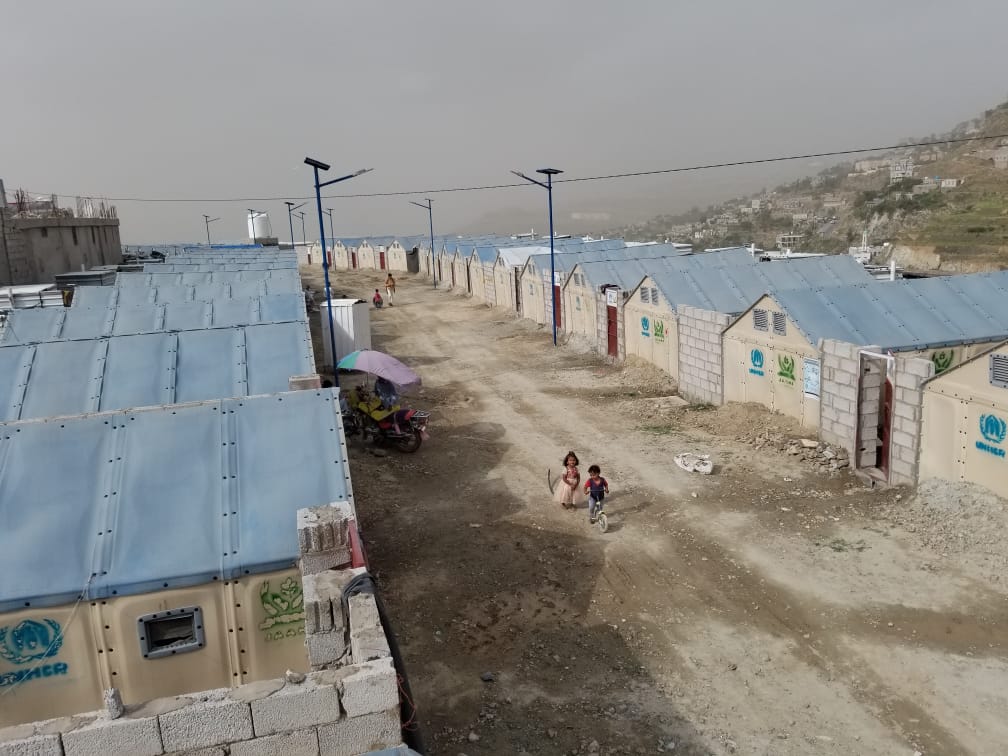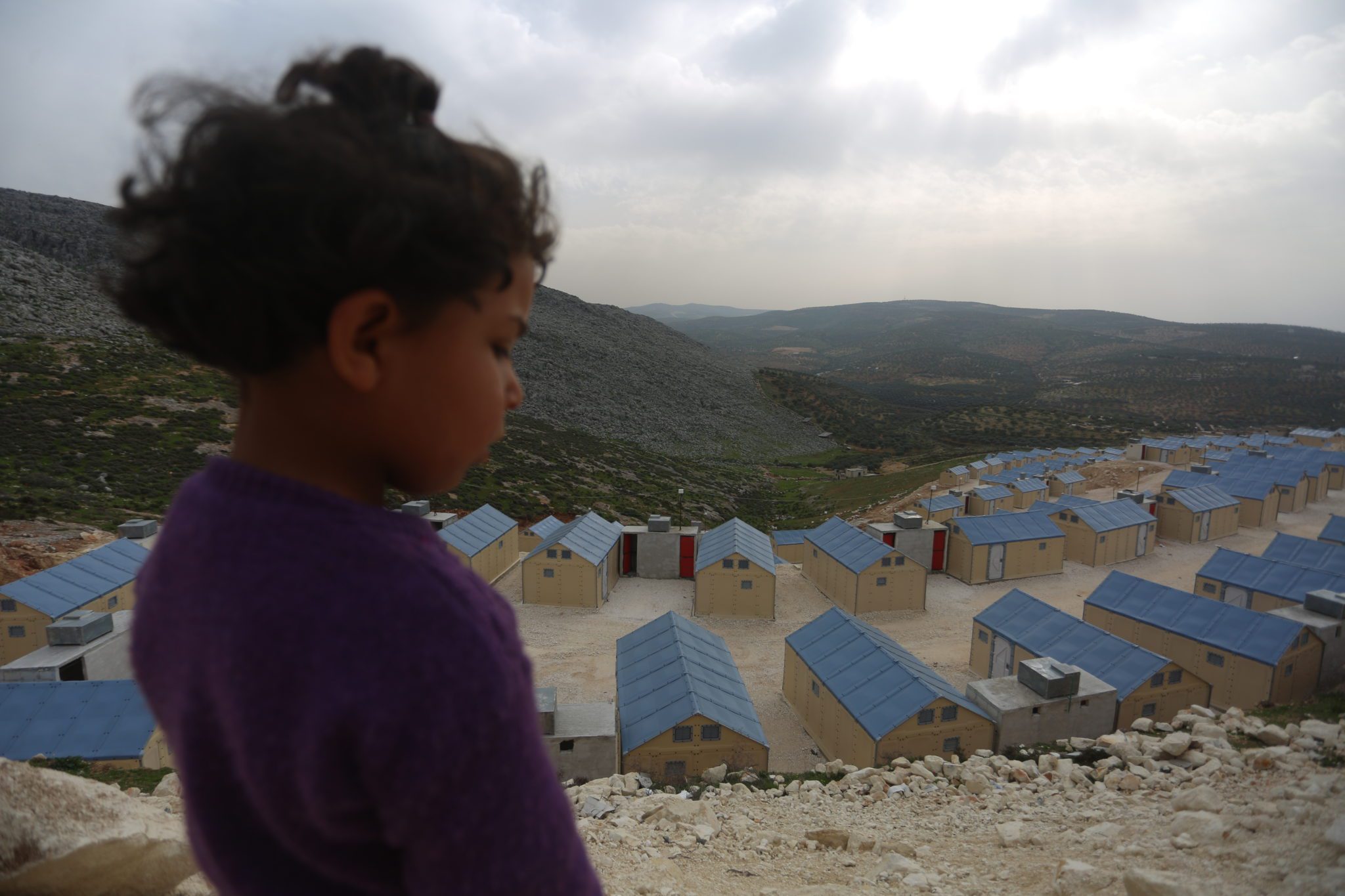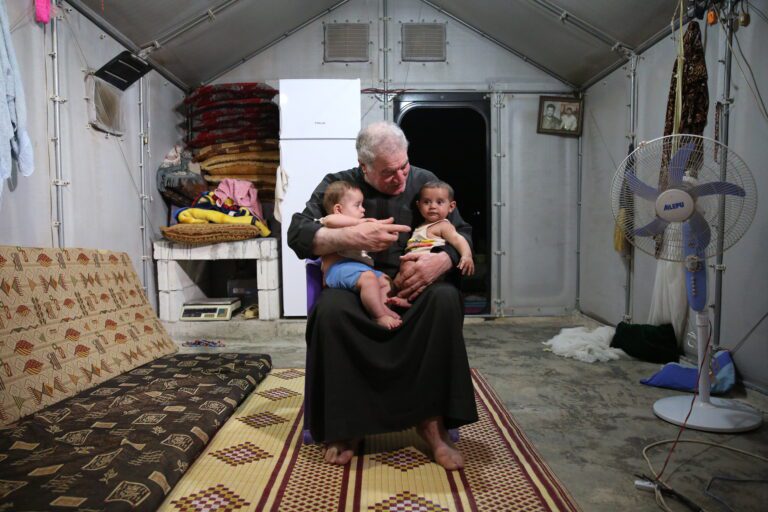The Global Report on Internal Displacement 2023 (GRID 2023) announced that the worldwide total of internally displaced people has reached a record high of over 71 million. With significant populations displaced by conflict or disaster, the ten countries with the highest number of IDPs are Syria, Ukraine, the Democratic Republic of the Congo, Colombia, Afghanistan, Yemen, Ethiopia, Somalia, Nigeria, and Sudan.
Take a look at our work supporting some of the major IDP populations around the world.
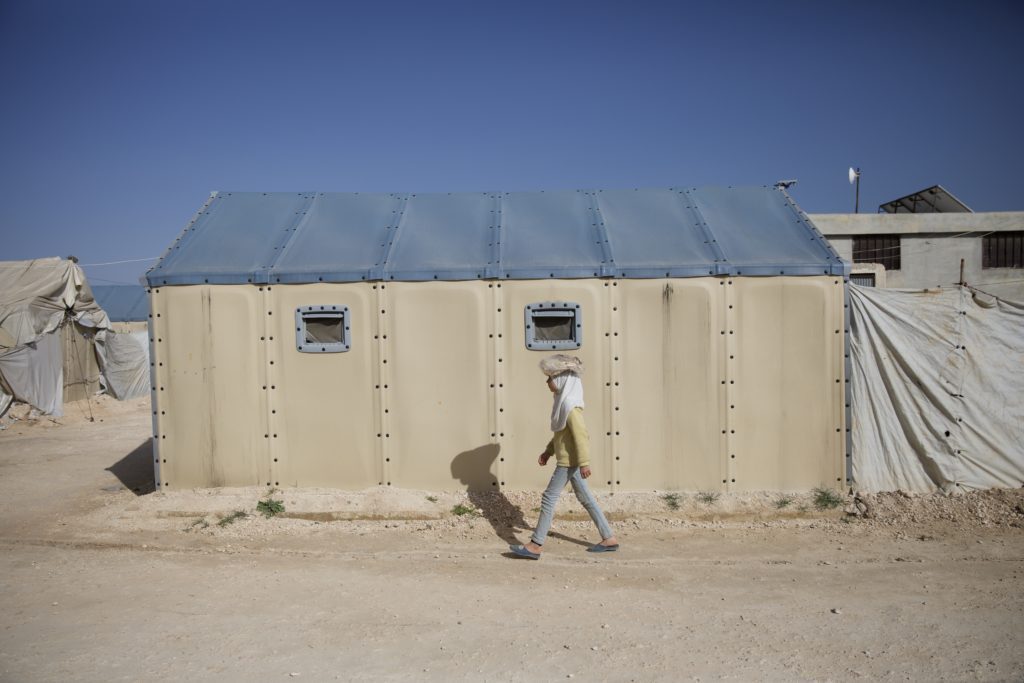
Syria: 6.8 million Internally Displaced People
The ongoing conflict that began over a decade ago in Syria has resulted in the highest number of internally displaced people in the world. However, despite fleeing to seek safety from violence, the IDP populations are still vulnerable to the effects of natural hazards, such as storms, floods and droughts. As recent as February 2023, North West Syria and Türkiye were hit by a powerful 7.8 magnitude earthquake, causing tens of thousands of casualties and leaving over 5 million homeless in Syria alone.
Since the inception of our organisation, we have formed some of our most profound humanitarian partnerships to support the Syrian IDP population. With UNHCR and local partners, we provided 6,000 RHUs as temporary shelters to camps across the Idlib Governorate in North West Syria. Our local partners in Syria, including ATAA Relief, Maram Foundation, and Watan Foundation, continue to ensure that the RHUs provide the best support for as long as needed.
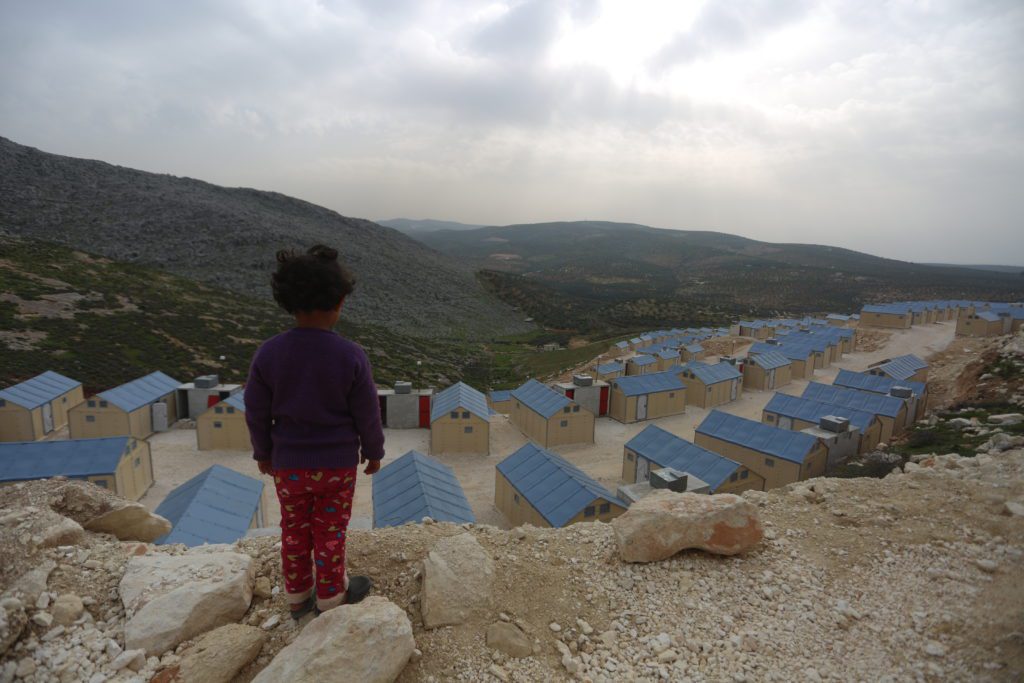
Ukraine: 5.9 million IDPs
While Eastern Ukraine has seen significant displacement since 2014, in just a few months following the outbreak of war in February 2022, the emergency in Ukraine quickly became the world’s largest refugee crisis. In the ongoing conflict, however, a large share of the Ukrainian population remains within the borders of Ukraine. It continues to migrate throughout the country to seek safety and access necessary services.
The European community acted urgently to ensure the distribution of critical aid to the displaced Ukrainian populations. In March 2022, DG ECHO and MSB—the Swedish Civil Contingencies Agency—established their response strategy to the emergency, which included 5,000 RHUs for deployment through rescue reserve stock. RHUs were implemented across strategic points in Ukraine as temporary shelters, reception centres, and child-friendly spaces, where protection services, heating, and electricity were provided to people needing assistance. The RHUs were adapted with winterising technology to ensure warmth in the cold winter.

Democratic Republic of the Congo: 5.6 million IDPs
The Democratic Republic of the Congo (DRC) came out first, for two years in a row, as the world’s most neglected displacement crisis. With its population suffering through years of drought and food insecurity, the security situation deteriorated significantly in 2022 in the east with the outbreak of conflict. Internal displacement is a typical feature of the humanitarian crisis in DRC, as people are in near constant movement to flee new areas of violence.
Responding to the overlapping crises, UNHCR provided 1,056 RHUs for implementation across camps in DRC as temporary emergency shelters for people fleeing conflict or disaster. The RHUs aim to benefit both IDP and refugee populations in the DRC, each growing in their own right, providing temporary shelter, protection services, and opportunities for livelihood recovery.

Afghanistan: 4.3 million IDPs
Afghanistan has faced one of the most acute and deteriorating humanitarian situations for over four decades. Internal displacement is a near-inevitable strategy for survival in many parts of the country, where conflict and disaster have a reoccurring effect on the population. For many families, displacement has been a way of life passed down through generations.
UNHCR has supported the displaced populations in Afghanistan for as long as they needed assistance. In 2019, after a significant surge in IDPs, UNHCR installed 289 RHUs in fourteen regions in Afghanistan, providing support across multiple sectors, from shelter to health, education and protection.
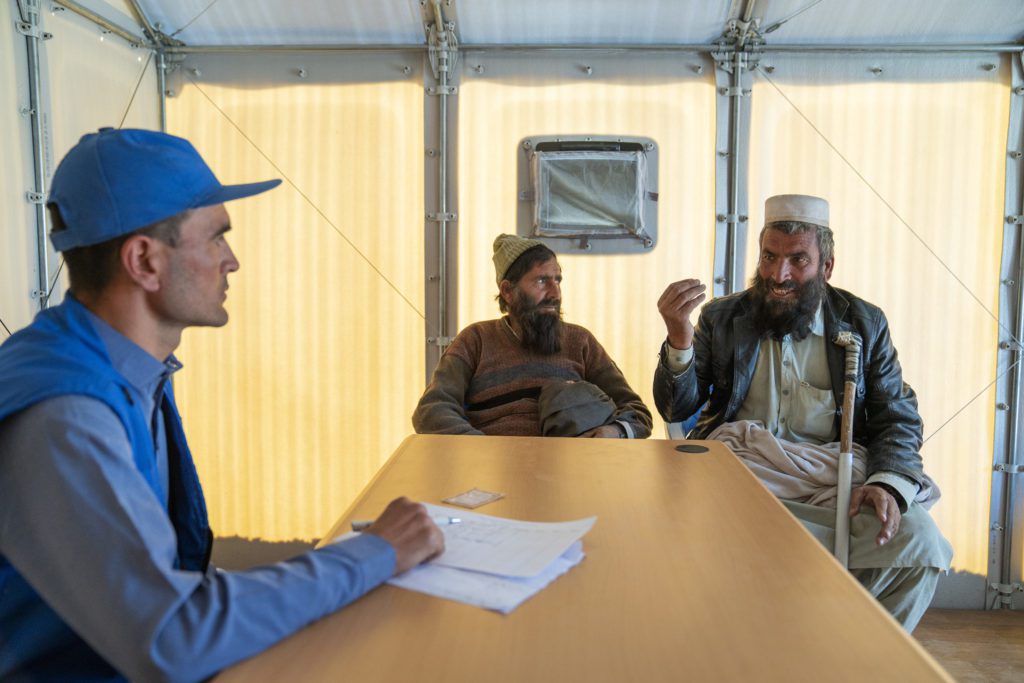
Yemen: 4.5 million IDPs
After continuous civil war, Yemen has been described as the world’s “worst humanitarian crisis”. Millions of people are internally displaced and face urgent needs due to some combination of conflict and disaster.
As the years have intensified hostilities, the humanitarian community continues to support Yemen’s most vulnerable and affected. In 2019, UNHCR installed 192 RHUs across Yemen to provide the necessary aid, including shelter.
